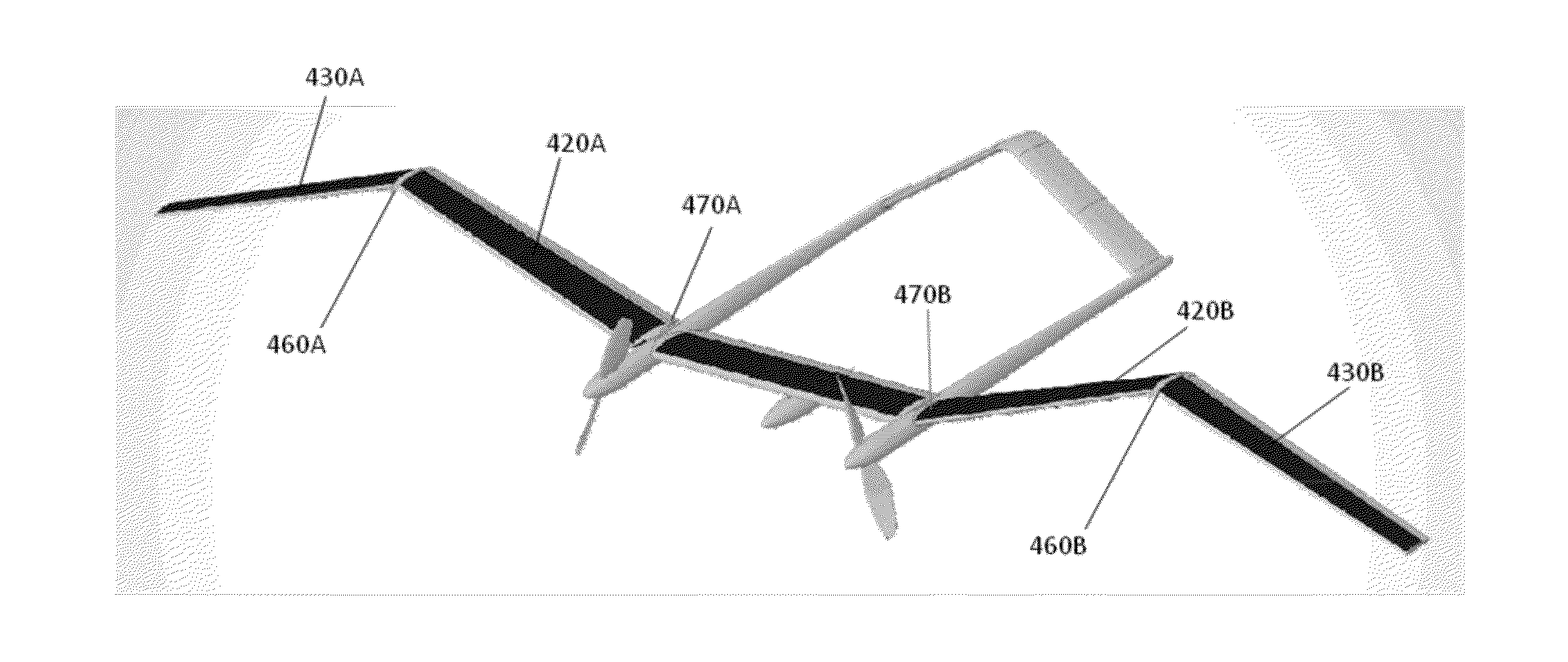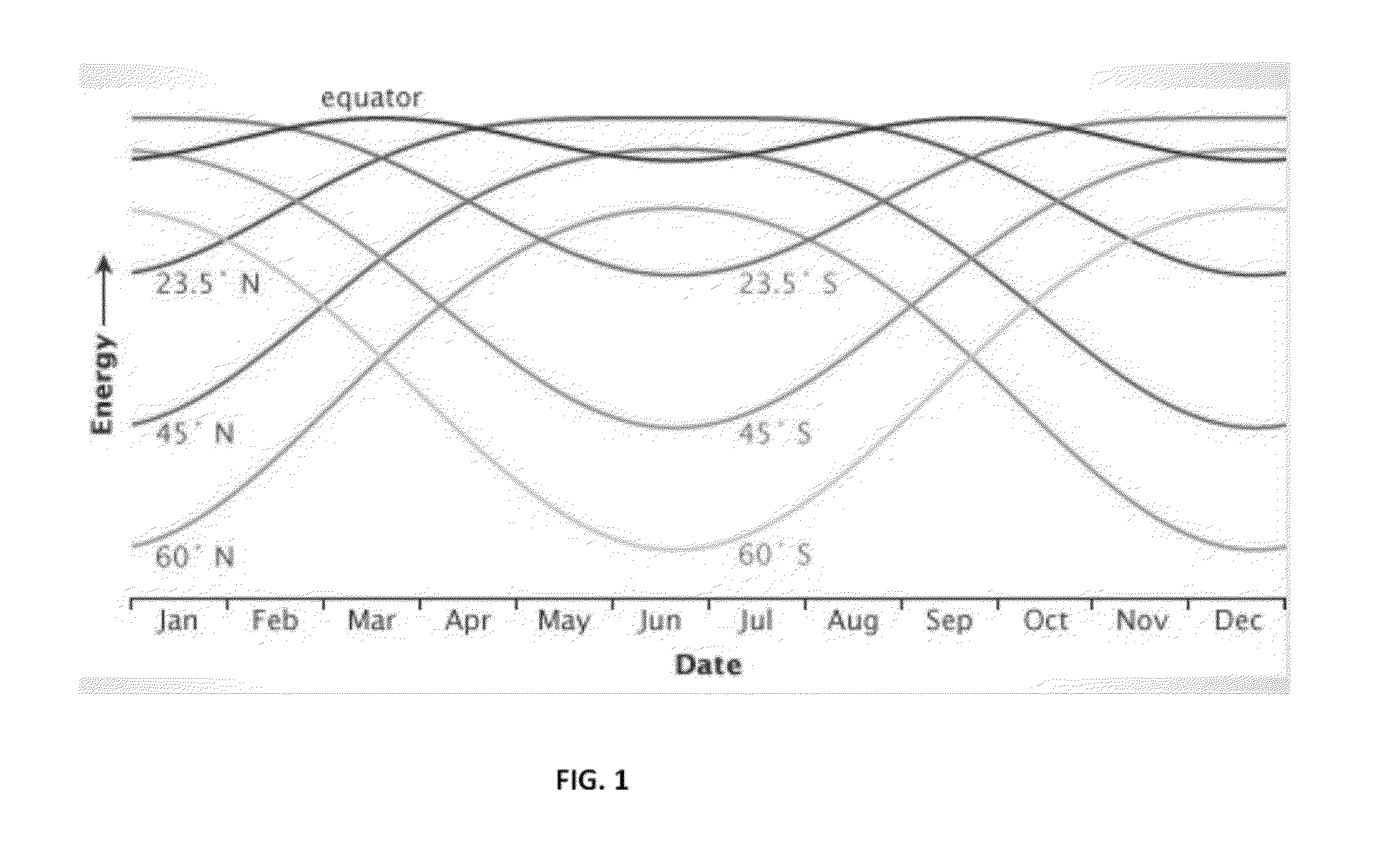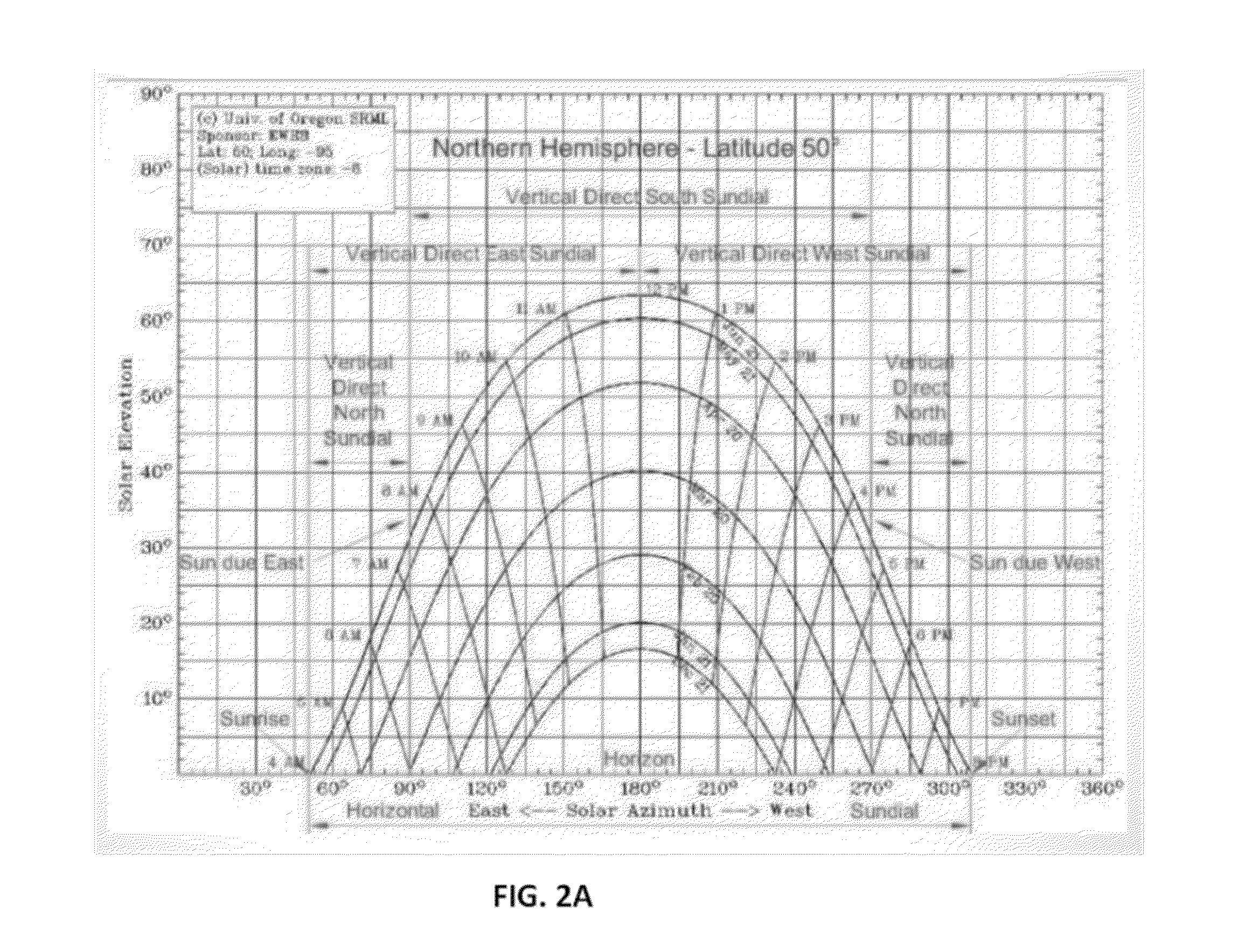Solar Powered Aircraft with a Variable Geometry Wing and Telecommunications Networks Utilizing Such Aircraft
a variable geometry, solar energy technology, applied in the field of solar energy aircraft, can solve the problems of rocket launch itself being a non-negligible risk, unable to recover and change orbits, and reducing so as to increase the efficiency of photovoltaic cells, the effect of sufficient rigidity
- Summary
- Abstract
- Description
- Claims
- Application Information
AI Technical Summary
Benefits of technology
Problems solved by technology
Method used
Image
Examples
Embodiment Construction
[0036]The following description includes information that may be useful in understanding the present invention. It is not an admission that any of the information provided herein is prior art or relevant to the presently claimed invention, or that any publication specifically or implicitly referenced is prior art.
[0037]High altitude, long flight endurance aircraft present an attractive alternative to satellites in telecommunications networks. One obstacle to the development of these is a power source that can sustain uninterrupted flight for weeks, months, or years without the need for active refueling. Solar power provides a potential solution, but presents challenges beyond the obvious day / night cycle. As shown in FIG. 1 the solar energy available in kilowatt per square meter varies as a function of time of year and geographical elevation (i.e. latitude). It is apparent that in the stratosphere (i.e. above the weather) significant solar energy is available in mid-winter at elevati...
PUM
 Login to View More
Login to View More Abstract
Description
Claims
Application Information
 Login to View More
Login to View More - R&D
- Intellectual Property
- Life Sciences
- Materials
- Tech Scout
- Unparalleled Data Quality
- Higher Quality Content
- 60% Fewer Hallucinations
Browse by: Latest US Patents, China's latest patents, Technical Efficacy Thesaurus, Application Domain, Technology Topic, Popular Technical Reports.
© 2025 PatSnap. All rights reserved.Legal|Privacy policy|Modern Slavery Act Transparency Statement|Sitemap|About US| Contact US: help@patsnap.com



